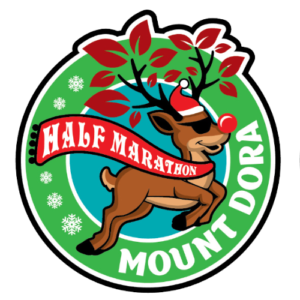So you’ve decided to run your first half marathon. Welcome to the club! You’re embarking on an adventure that’s interesting, challenging, rewarding and has the potential to change you in new and positive ways. Maybe you’re wondering whether you can put one foot in front of the other for 13 miles. You can! Millions of others have and so can you.
Pick a good event. Among the nation’s best half marathons are the December half marathons Florida has to offer, where you race comfortably while other states are shivering. But wherever and whenever you compete, here are some tips to get you across that finish line.
Are My Shoes Okay?
If you’ve been running for a while and haven’t experienced a leg, ankle, or foot injury, they probably are. If you’re not sure or if you’re a new runner, this is a great time to get a second opinion. Talk to a professional who specializes in running shoes. They’ll ask how your shoes wear and how you push off and land, and make suggestions that suit your feet and your form.
How Long Do I Need to Train?
If you’re already running three times a week and three miles each time, three months preparation is about right. If you’re a newbie going from couch to half marathon, allow a bit longer and consider targeting some 5Ks or 10Ks first. There are lots of helpful training schedules online, and if you have a good base you can start in the middle of one. Many cities have clubs that sponsor training groups. Some people suggest a more compressed schedule, but be warned: upping your mileage too rapidly increases your risk of injury.
All good half marathon training programs should include these elements:
1. The weekly long run. This should start at a bit more than you run now and ramp up to about 10 miles. If you can, run the same day of the week and the same time of day as the event. As your runs get longer, carry a water bottle or take your route through a park that has a fountain. Also, experiment with food. If you do best when eating before and during a training run, that’s what you should do at the race. Don’t run too hard on these. If you can’t keep up your targeted race pace, back off a little. To mix things up, it’s okay to substitute a 10K for one or two of these sessions.
2. Rest days. Take time off from running one to three days a week. Some of these you can cross-train with cycling, swimming, or other sports. But on at least one, don’t do much of anything.
3. Two to four days of regular runs. Increase these from three to five miles during your training period. If you’re running twice a week, go the full three to five, faster than half marathon pace. If you’re doing three or four days, some should be shorter and it’s okay to slow down on a few.
On each run, crank up your speed slowly. At the end, cool down with jogging or walking and do some stretching.
What If It Hurts?
A few ache and pains are to be expected, but if you have specific pain in your legs, hips, or back that is sharp or hurts as you land and gets worse as you go, back off for a few days. Nothing derails a training plan faster than an injury. If the injury lasts long enough to put you behind on your schedule, be smart. You have an entire lifetime to enjoy this sport. Target a shorter race and come back to distance later.
Countdown to Race Day
Taper off. Do only a couple short runs the last week. Fast two-milers will help keep your edge. This is a great time to double check the race schedule, parking details, and have a refreshing look at the course. The final few days, bias your diet toward carbohydrates. The day before, kick your feet up and don’t do anything. Watch TV or read a book. Something by a running writer such as George Sheehan or Bill Rodgers is an excellent choice.
Finally, It’s Race Day!
Here’s the most important advice of all: don’t go out too fast! You’ll feel exhilarated, the first few miles will be ache-free, and the crowds—both your fellow runners and the folks cheering from the sidelines—will give you confidence and make you want to fly. Don’t do it. Consider using a watch that can track your split times (your time for each mile).
If it’s a big race with a crowded start, your first mile will be slow. Don’t worry about it. Aim for “negative splits,” i.e., running a little faster as the race proceeds.
Don’t skip water stations. If you want to, pace yourself by walking through them. There may be energy supplements on offer, but unless you’ve used them in training, pass.
Crossing the finish line after running a half marathon is a feeling like no other. You’ll be tired, sore, ecstatic, aching, and thrilled. Volunteers will pamper you. They’ll drop a medal over your neck and hand you the most delicious food and drink you ever had.
One final caveat: This sort of thing is habit-forming. Within days you’ll be thinking of ways to do better next time.
